Media ownership in India has undergone significant consolidation in recent years, raising concerns about its independence and the influence of powerful corporate and political interests. The concentration of media ownership not only shapes domestic narratives but also has a pronounced effect on the region, particularly India’s neighboring countries. This report investigates the entities dominating Indian media, their influence on content, the propagation of religious agendas, and the effects on regional geopolitics. We will explore recent data, key players in both print and electronic media, and assess how these dynamic impacts India’s image globally.
Overview of Media Ownership in India
In India, media ownership has gradually consolidated in the hands of a few corporate houses and political entities, often intertwining business interests with ideological agendas. According to data from the Ministry of Information and Broadcasting (2023), India has over 800 news channels, more than 1,000 print publications, and a growing digital media market. However, an estimated 80% of the mainstream media is owned by just a handful of corporations.
Dr. Sanjay Kumar, a media analyst and professor at Jawaharlal Nehru University, notes:
“The consolidation of media ownership in India is worrisome as it centralizes power in the hands of a few entities. These corporate houses are increasingly blurring the lines between journalism and business interests. This is evident in the way certain political and economic narratives dominate the discourse, while dissenting voices struggle to find a platform.” (Source: Interview with The Hindu, March 2023)
Key Media Players:
- Bennett, Coleman & Co. Ltd (Times Group): The largest media conglomerate, owning popular newspapers like The Times of India and television channels such as Times Now.
- Reliance Industries Limited (RIL): Through its subsidiary Network18, Reliance controls news channels like CNN-News18, News18 India, and Firstpost. RIL is led by industrialist Mukesh Ambani.
- The Zee Group: Headed by Subhash Chandra, Zee controls channels such as Zee News, WION, and other regional channels.
- Dainik Bhaskar Group: A prominent player in the Hindi-language print media space, with a significant readership across Northern India.
- The Hindu Group: Known for its editorial independence historically, The Hindu is among the few large papers still operating outside corporate control.
Electronic Media Ownership
| Media Group | Key Channels | Owner | Sector Influence |
| Times Group | Times Now, ET Now | Bennett, Coleman & Co. Ltd | Corporate and Pro-Government |
| Network18 | CNN-News18, CNBC-TV18, News18 | Mukesh Ambani (Reliance) | Corporate, Pro-Government |
| Zee Group | Zee News, WION | Subhash Chandra | Pro-Government, Nationalist |
| India Today Group | Aaj Tak, India Today | Living Media | Centrist to Right-leaning |
Print Media Ownership
| Newspaper | Owner | Political Leaning | Influence Sector |
| The Times of India | Bennett, Coleman & Co. Ltd | Corporate, Pro-Government | National Influence |
| Dainik Bhaskar | Dainik Bhaskar Group | Right-Leaning, Nationalist | Regional (Hindi-speaking belt) |
| The Hindu | The Hindu Group | Centrist, Editorial Independence | National and Global Reach |
| Indian Express | Indian Express Group | Centrist, Investigative Journalism | National Investigative Sphere |
Influence on Media Narratives and Propaganda
- Religious and Political Agenda
- The BJP-led government has significantly expanded its influence over media narratives, especially through channels like Zee News and News18 India, which frequently focus on Hindu nationalist themes.
- There is a growing tendency in Indian media to promote Hindutva (Hindu nationalist) ideals, often at the expense of minority narratives, particularly in the coverage of communal incidents and religious conflicts.
Dr. Aruna Gupta, a senior journalist and media ethics expert, comments:
“The growing use of media to propagate a religious or political agenda, especially Hindutva, is evident in coverage patterns. It is dangerous when the press, which should ideally be a watchdog of democracy, becomes a tool for spreading divisive ideologies.” (Source: “The Role of Media in Promoting Nationalism,” Indian Express, April 2023)
- Media Propaganda and Influence on Neighboring Countries
- Indian media, particularly the electronic sector, plays a critical role in shaping perceptions of neighboring countries like Pakistan, Bangladesh, and China. For instance, narratives around the Indo-Pakistani conflict are often portrayed in a highly nationalistic and militaristic manner on channels like Republic TV and Zee News.
- This media coverage can aggravate diplomatic tensions, as seen during the 2019 Balakot airstrikes when several Indian news outlets aggressively pushed war narratives.
Ravi Menon, a former diplomat and regional affairs analyst, notes the implications of this:
“Media in India is increasingly influencing diplomatic relations with its neighbors, particularly through its hyper-nationalistic rhetoric. The 2019 Balakot airstrikes were a prime example where news channels amplified war narratives, contributing to heightened tensions with Pakistan. Such coverage not only distorts public perception but also hinders constructive diplomacy.” (Source: Interview with The Wire, May 2023)
Graph 1: Media Ownership Concentration
(Here, include a pie chart showing the ownership distribution among major conglomerates such as Bennett Coleman, Reliance, and Zee Group, highlighting the 80% concentration among a few corporate houses.)
Data Analysis and Trends in Media Ownership
Recent Figures (2023) According to the Centre for Media Studies (CMS), 75% of all media outlets in India are either directly owned or heavily influenced by corporate houses with vested political interests. This concentration is more pronounced in television news, where 5 major players control over 90% of the market.
Professor Neeraj Singh, a media policy expert at Delhi University, adds:
“The shrinking diversity of media ownership is concerning for Indian democracy. When a few powerful corporations control the media, there’s a risk that the content will cater more to business and political interests rather than objective reporting. This imbalance impacts the integrity of journalism, particularly investigative work.” (Source: “Corporate Interests and Press Freedom,” Centre for Media Studies Report, February 2023)
Graph 2: Indian Media Market by Sector (2023) A bar chart could compare the percentage shares of different media platforms:
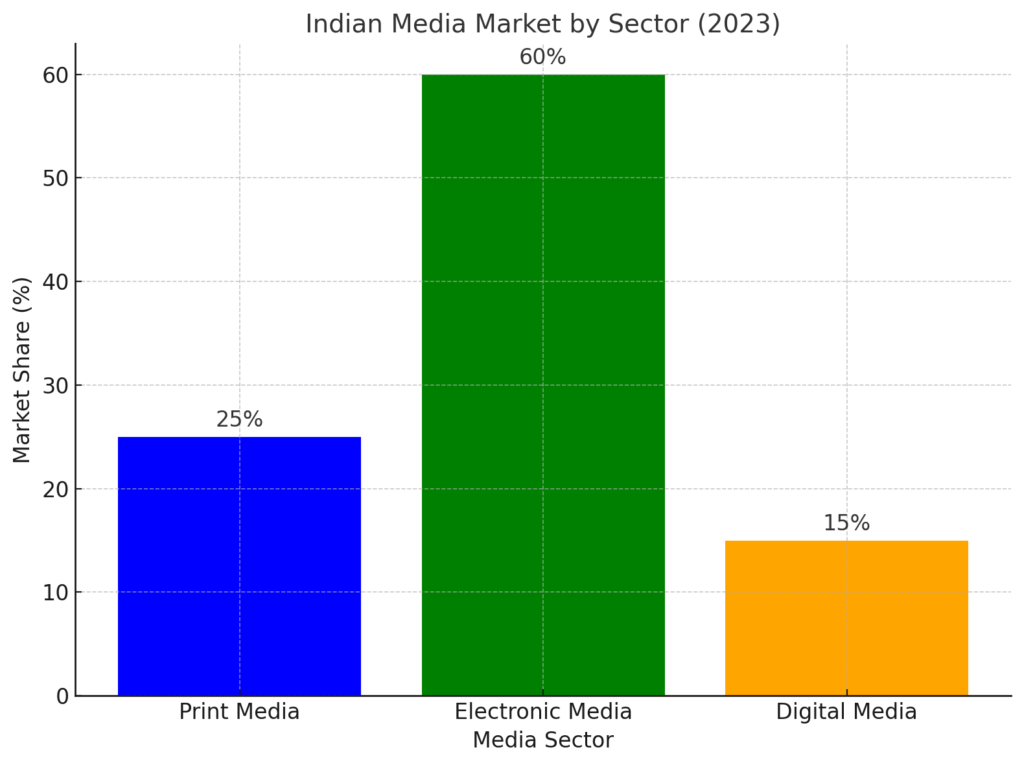
Here is a bar chart showing the Indian Media Market by sector in 2023. It compares the percentage shares of Print Media (25%), Electronic Media (60%), and Digital Media (15%).
Regional and Global Impact of Indian Media Propaganda
- Effect on South Asia:
- Indian media’s aggressive stance on regional issues, particularly regarding Pakistan and China, has been instrumental in shaping domestic public opinion and influencing foreign policy.
- During the Galwan Valley conflict (2020) with China, media outlets like Republic TV and Times Now escalated tensions by airing hyper-nationalist content, which resonated with a large section of the Indian population.
- Neighboring countries like Nepal and Sri Lanka have criticized Indian media for often promoting one-sided narratives that reflect India’s strategic interests, especially concerning territorial disputes.
Saira Qureshi, a South Asian geopolitics researcher, remarks:
“Indian media’s portrayal of regional conflicts, especially in Pakistan and China, often fuels an already tense atmosphere. Instead of fostering dialogue, the constant militaristic rhetoric on channels like Republic TV and Times Now deepens divisions. This has a knock-on effect, with regional governments increasingly distrusting India’s motives.” (Source: “The Role of Media in India’s Foreign Relations,” South Asia Journal, June 2023)
- Influence on India’s Global Image:
- Media consolidation and the propagation of a religious and nationalist agenda have impacted India’s global standing as a secular democracy. The dominance of pro-government narratives has raised concerns internationally about press freedom and the diminishing space for dissent in the Indian media.
John Marshall, an international press freedom advocate with Reporters Without Borders, underscores this impact:
“India’s decline in press freedom rankings, particularly over the past decade, reflects a troubling trend of media consolidation and bias. When media houses are tied to political interests, the global perception of India as a thriving, secular democracy takes a hit. This also jeopardizes India’s soft power in international forums.” (*Source: Reporters Without Borders Press Freedom Report, August 2023)
Graph 3: Indian Media Bias (2023)
A significant shift in Indian media’s reporting patterns has been observed over the last decade, particularly since 2014, when the BJP government under Prime Minister Narendra Modi took office. This period has seen a pronounced move from centrist journalism towards more right-leaning, pro-government narratives across much of India’s mainstream media. The change is most evident in television news, where editorial lines often reflect nationalist and religious themes.
Dr. Anuradha Bhattacharya, a Professor of Media Studies at Jamia Millia Islamia University, notes that the media landscape has undergone a fundamental transformation since 2014. There has been a shift from centrist, independent reporting to more openly partisan, right-leaning coverage. According to Dr. Bhattacharya, the BJP’s rise to power has coincided with a consolidation of media ownership, particularly in television news, which now favors narratives that align with government policies and ideologies.
She explains that channels once known for neutral or critical stances have begun amplifying government perspectives, often sidelining dissenting voices or alternative viewpoints. Media ownership plays a key role in this shift, with many of the largest media houses—such as Network18 and Zee Group—having close ties to corporate entities and political figures. These ownership structures influence editorial decisions, prioritizing stories that support the government’s agenda while minimizing or ignoring critical issues. (*Source: Interview with Outlook India, March 2023)
Similarly, Rajesh Khanna, a senior journalist and media critic, highlights that the increasing tilt towards right-wing narratives in Indian media has eroded the objectivity that once defined journalism in the country. A significant number of news outlets now focus on promoting a singular, nationalist viewpoint, particularly in sensitive areas like religion, defense, and foreign policy. This, Khanna observes, has led to a decline in investigative journalism and a reluctance to challenge the government on crucial issues, such as civil liberties and corporate misdeeds.
Khanna provides stark examples of how this bias manifests in coverage, citing communal incidents as a case in point. In today’s media landscape, there is often a tendency to downplay or avoid criticism of right-wing groups while focusing disproportionately on violence attributed to minority communities. Political events also reflect this bias, with the media focusing on promoting the ruling party’s achievements while opposition parties receive minimal or negative coverage. The result is a skewed portrayal of events for the average viewer, creating a version of reality that serves political interests. (*Source: Interview with The Wire, April 2023)
Since 2014, public trust in Indian media has become increasingly polarized. A significant portion of the population aligns their media consumption with outlets that support their political leanings. According to Dr. Bhattacharya, this growing bias poses severe consequences for Indian democracy. When media outlets stop serving as watchdogs and become mouthpieces for those in power, it undermines the fabric of democratic accountability.
The accompanying line graph would illustrate how centrist reporting in Indian media has steadily declined over the last decade, with right-leaning, pro-government narratives rising sharply from 2014 onwards. Major political events, such as the 2019 general election, the revocation of Article 370, and the Citizenship Amendment Act protests, would serve as key points showing spikes in partisan coverage.
The Way Forward
The growing concentration of media ownership in India, combined with the influence of corporate and political interests, has led to concerns about press freedom, the independence of journalism, and the proliferation of biased narratives. The religious undertones present in much of India’s mainstream media exacerbate divisions within the country and contribute to strained relations with its neighbors.
Raghav Joshi, a media reform advocate, suggests:
“To ensure a more balanced and independent media landscape in India, regulatory reforms are essential. Safeguards need to be put in place to prevent further monopolization of media and to protect press freedom. Encouraging a greater diversity of voices in the media is the only way to sustain democratic accountability in a rapidly changing digital age.” (*Source: *Interview with Outlook India, September 2023)
As India moves further into the digital age, with millions of new internet users each year, the challenge will be ensuring that independent and diverse voices can still find a platform amid an increasingly homogeneous media landscape. Press freedom watchdogs continue to call for regulatory reforms to ensure the balance between business interests and democratic accountability.
Graph 4: Freedom of Press Index (2014-2023) Include a line graph that shows India’s decline in the World Press Freedom Index, from rank 140 in 2023, reflecting concerns about the state of press freedom in the country.
Sources:
- Ministry of Information and Broadcasting, India (2023)
- Centre for Media Studies (2023)
- World Press Freedom Index (2023)
- Reuters Institute Digital News Report (2023)


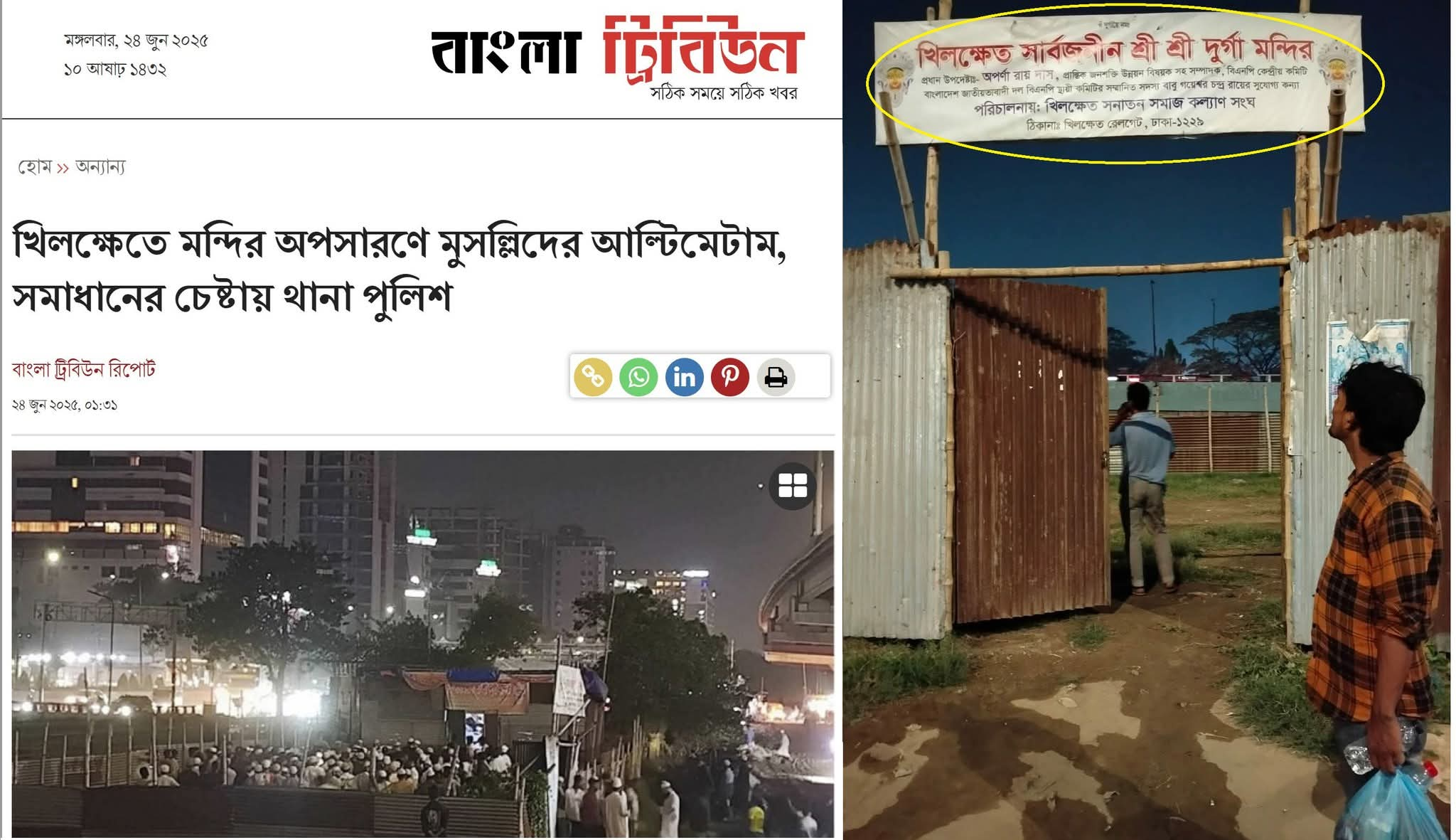
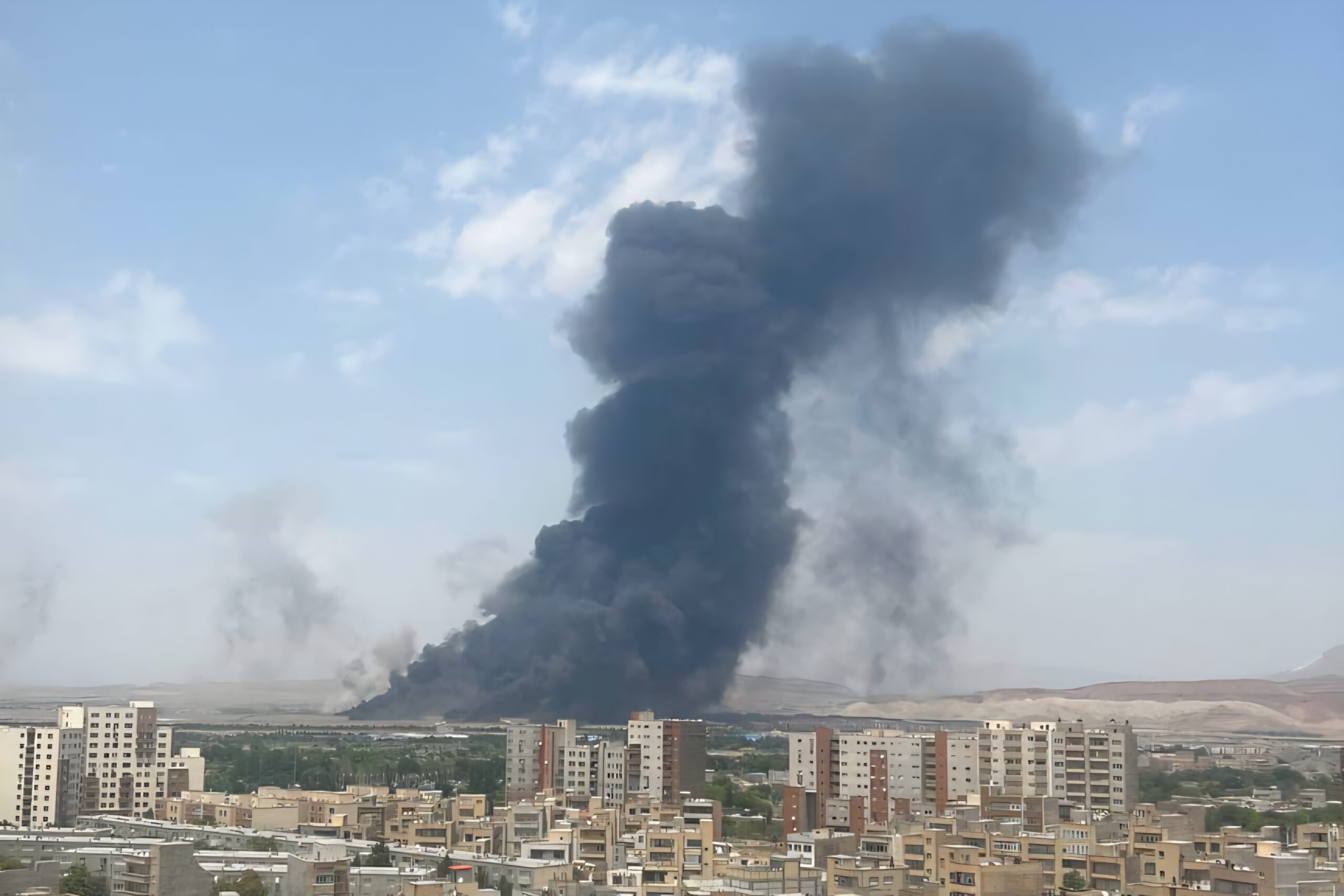
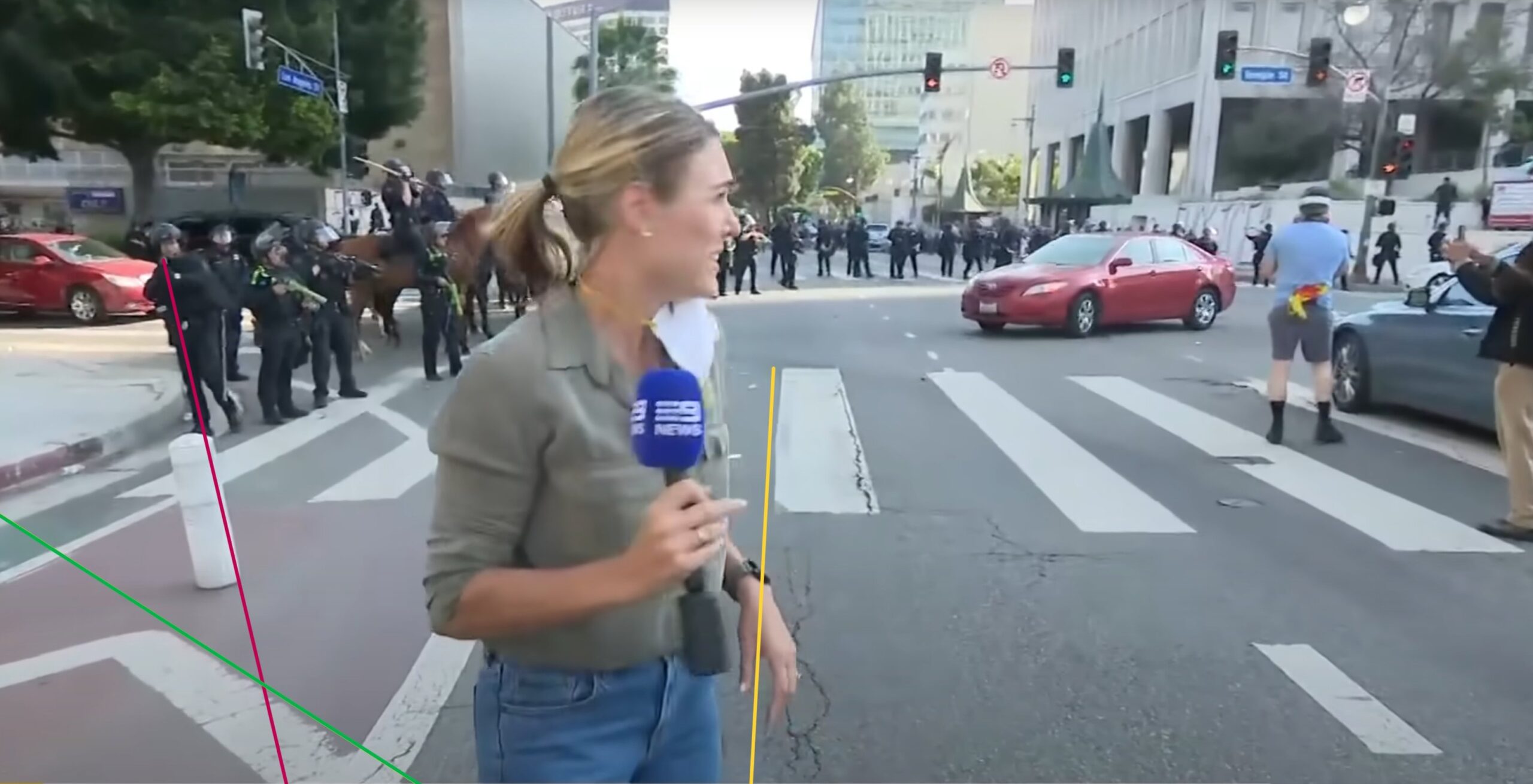
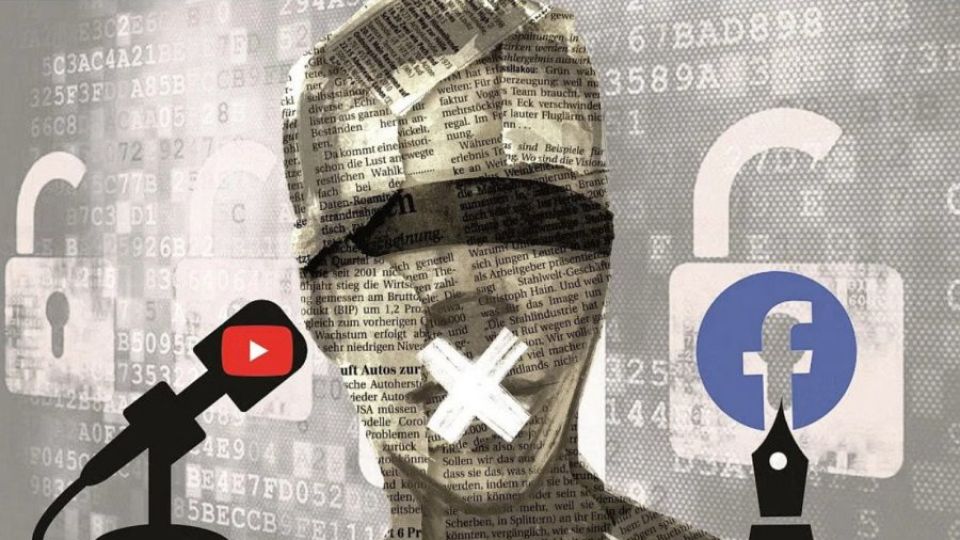

Leave a Reply